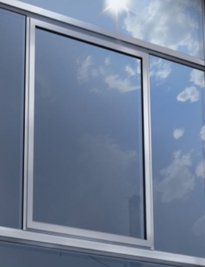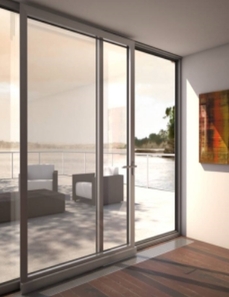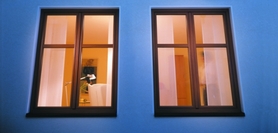Differences between aluminum and PVC windows
How to save on energy costs

The market offers a wide variety of frames in terms of type, quality and price. Decision on the selection of frames is often subjective, but it's good to be familiar with the characteristics of different types of frames. Therefore the choice of windows remains a complex and demanding task for any buyer.
Most often frames is divided into: aluminum, plastic (PVC), and wooden and steel. Given the widespread distribution of aluminum and plastic windows in Bulgaria, will discuss and compare in detail only these two species.
Most often frames is divided into: aluminum, plastic (PVC), and wooden and steel. Given the widespread distribution of aluminum and plastic windows in Bulgaria, will discuss and compare in detail only these two species.
* The choice of aluminum or plastic windows depends on the character of the building or the interior of the home. As a rule of modern or modernist architecture more suited to metal frames. If you are looking for comfort - plastic window is the right decision. However, the choice of windows is primarily a matter of individual taste.
Ways for energy saving

Picture: SCHÜCO/ALUKÖNIGSTAHL
The more multi-chamber is a profile , the more heat will save . In terms of heat insulation - with plastic windows achieves high insulation values at significantly lower cost than the aluminum . If we consider the condensation surface of the plastic window profiles inside is warmer than aluminum , which results in less likelihood of condensation of moisture.
There is a simple rule - the better ( lower- value) is the coefficient of thermal conductivity (Uw) of the woodwork , the more energy efficient it will be . This coefficient depends both on the type of profile system staklopaketa.Pravilnoto installing windows and seal the joint on its periphery are essential for thermal insulation properties of windows .
There is a simple rule - the better ( lower- value) is the coefficient of thermal conductivity (Uw) of the woodwork , the more energy efficient it will be . This coefficient depends both on the type of profile system staklopaketa.Pravilnoto installing windows and seal the joint on its periphery are essential for thermal insulation properties of windows .
What is insulation index and heat transfer coefficient for windows - explanation and examples in both windows?
Coefficient of the windows (Uw) is an indicator determining its energy class. Measured in Watts / square meter Kelvin (W/m2K). Shows how much energy (heat , cold) , measured in Watts passes through one square meter windows of the difference in temperature inside - out by one degree . Example : Uw = 1,4 W/m2K - is 1.4 watts passing through one square meter of the windows of the difference in out- 1 degree Celsius. If we have a temperature difference of 20 degrees (eg inside is 20 degrees , 0 degrees outside ) , then in one square meter of windows pass 20x1 , 4 = 28 watts . If windows have size 10 m2 , the total energy passing through it would be 280 watts. In 24 hours it makes 280h24 = 6720 watt / hours or 6.72 kwh .



